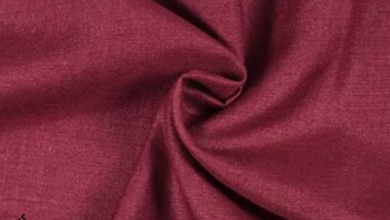WigFever Understanding Lace Closure Wigs: Unveiling the Differences Between 4×4 and 5×5 Lace Closures

In the world of wigs, lace closure wigs have gained immense popularity for their natural-looking appearance and versatility. Among these, the 4×4 and 5×5 lace closure wigs have emerged as top choices for those seeking a seamless and realistic hairline. Let’s delve into the specifics of these lace closure wigs to understand their differences and unique features.
Exploring 4×4 Lace Closure Wigs
Introduction to 4×4 Lace Closures
4×4 lace closure wigs are crafted with a closure piece that measures 4 inches by 4 inches. This square-shaped closure is placed at the front or crown of the wig, mimicking the scalp and creating a natural-looking parting space.
Characteristics and Benefits
The 4×4 lace closure offers wearers a smaller but versatile parting area. Its smaller size allows for a more focused and defined part, offering a natural appearance at the hairline. These wigs are relatively easier to install and maintain due to the smaller closure area.
Styling Options and Versatility
Despite the smaller closure size, 4×4 lace closure wigs provide versatility in styling. Wearers can create various parting styles, such as middle parts or side parts, and even experiment with different hairstyles, ensuring a realistic and flawless look.
Understanding 5×5 Lace Closure Wigs
Introduction to 5×5 Lace Closures
5×5 lace closure wigs feature a closure piece that measures 5 inches by 5 inches. This slightly larger square-shaped closure provides wearers with a wider parting space, offering more flexibility in styling and a broader area that mimics the natural scalp.
Characteristics and Benefits
The 5×5 lace closure offers wearers a more extensive parting area compared to the 4×4 closure. This larger size allows for greater versatility in parting styles and hairstyling options. The additional coverage provides a more realistic and natural-looking hairline.
Styling Options and Versatility
With the increased parting space, 5×5 lace closure wigs offer wearers numerous styling possibilities. These wigs enable various parting styles and hairstyles, providing a seamless and natural appearance that caters to different preferences.
Differentiating Between 4×4 and 5×5 Lace Closure Wigs
Coverage and Parting Space
The primary difference lies in the size of the closure area. While both closures offer natural-looking parting spaces, the 5×5 closure provides a larger coverage area compared to the 4×4 closure, allowing for more diverse styling options.
Versatility and Styling Flexibility
While both closures offer styling versatility, the 5×5 closure provides wearers with a broader canvas for experimentation. The larger closure size allows for various parting styles and hairstyles, accommodating a wider range of preferences.
Installation and Maintenance
Both 4×4 and 5×5 lace closure wigs are relatively easy to install and maintain. However, due to the smaller size, 4×4 closures might require slightly less effort for installation and upkeep compared to 5×5 closures, which have a larger surface area.
Choosing the Perfect Lace Closure Wig
Selecting between 4×4 and 5×5 lace closure wigs depends on individual preferences, styling needs, and desired looks. Considering factors like coverage area, styling options, and ease of maintenance aids in choosing the ideal lace closure wig.
Styling Tips for 4×4 and 5×5 Lace Closure Wigs
Tips for 4×4 Lace Closure Wigs
- Use tweezers to pluck the hairline of the closure for a more natural look.
- Secure the wig properly to prevent shifting or sliding of the closure.
Tips for 5×5 Lace Closure Wigs
- Customize the parting space by plucking hairs from the closure to create a more natural appearance.
- Utilize wig adhesive or tape for a secure and comfortable fit.
Conclusion: Enhancing Your Wig Experience
In conclusion, both 4×4 and 5×5 lace closure wigs offer natural-looking parting spaces and styling versatility. The choice between these closures hinges on individual preferences, styling needs, and desired coverage area.



